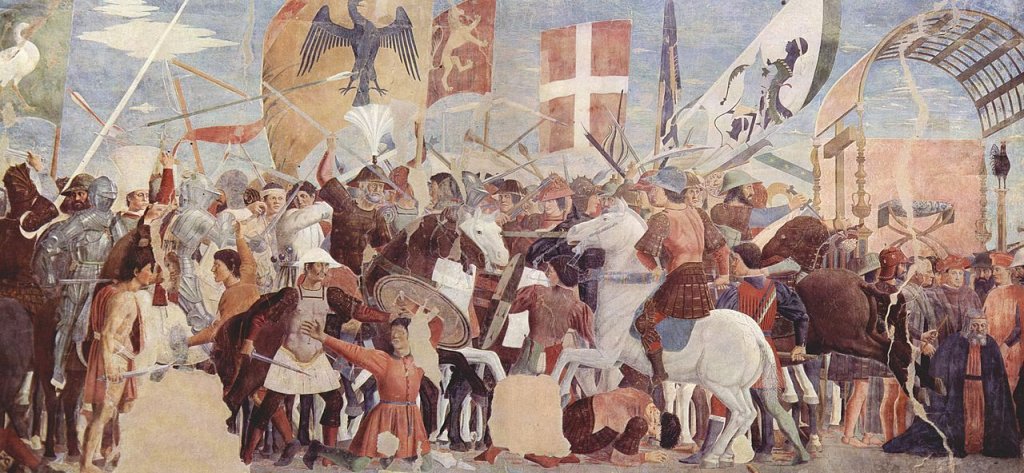Not all empires are created equal. Some are built over centuries and fall only because of internal mismanagement. Some outgrow their ability to govern themselves. Others seem formidable on the outside but are actually slowly rotting away. Some just outright get conquered.
Then there are those who, in a chain of inexplicable events, just seem to fall victim to bad luck, freak accidents, or just unforeseen events that cause the whole thing to start crumbling. These are those empires.
1. Byzantine Empire
The Byzantine Empire began its life as the eastern half of the Roman Empire. Not a bad start, all things considered. Long after Rome fell, Byzantium (later Constantinople) stood the test of time… for a while. Then in 1202, Pope Innocent III called for a Fourth Crusade. It would be the beginning of the end for the Byzantines.
The Byzantines had just finished a complete rebuilding of its institutions, including the government, military, and capital city when Christian knights on their way to Jerusalem stopped there. The Byzantine Emperor was ready to reunite with Rome, pay and supply the knights, and then march on Jerusalem with them.
Instead, the knights sacked Constantinople, and the entire empire fell into a series of divided competing kingdoms. The Byzantines retook the city but the empire never recovered and was easy pickings for the Turkish armies of Mehmed the Conqueror in 1453.

2. Khwarezmian Empire
If you’ve never heard of the Khwarezmian Empire, don’t worry, that’s not a surprise. Around the time the Byzantines were trying to deal with the fallout of being sacked by their Christian allies, The Khwarezmian Empire was reaching its apogee under Shah Muhammed II. It was the most powerful empire in Central Asia, poised to conquer the Middle East when it made the mistake of killing a caravan of traders and diplomats who came from a place called Karakorum.
Karakorum might sound more familiar to history buffs because it was the seat of power for Genghis Khan’s empire. Muhammed and the Khwarezmians killed 500 Mongols in a needless display of power. The Mongol response was swift. His sons stormed into the empire, destroyed the Shah’s army and burned the entire Khwarezmian Empire to dust.

3. Inca Empire
The Incas ruled over an empire larger than any European state of its time and larger than any empire ever founded in the New World. It oversaw a massive expansion of the empire by absorbing neighboring tribes and cities and conquering those who resisted. At its height, it boasted 16 million subjects speaking 40 languages. They did it without writing, horses, or metallurgy. Then, the Spanish showed up.
Spain brought with them European diseases that decimated its robust population. Once the Spanish began fighting the Inca, it took only 168 men to kill thousands of Inca Guards, capture the emperor, and bring the entire Inca system crumbling down. It took lease than 100 years for the Inca to rise and less than 40 to fall.

4. The Kingdom of Georgia
The Georgians (not the state of Georgia, the Central Asian country) was founded after a long independence struggle from the Seljuk Turks. After paying tribute to the Seljuks for decades, the First Crusade gave the Georgians the opportunity to expel the Turks from their lands and establish an empire, which they did after the 1121 Battle of Didgori.
The Kingdom was well-led by King David IV, who built up Georgia after leading his country to independence. His heirs were also wise rulers who led admirably until the Mongols showed up. The Kingdom of Georgia as an independent state lasted only a century until it fell under Mongol domination and was never able to reach the Golden Age it once enjoyed in its independence.

5. Carthaginian Empire
Carthage is the ultimate example of winning the battles but losing the war. Mighty Carthage was superior to the Roman Empire in almost every way. As the dominant seafaring power in the Mediterranean, it conquered an extensive empire that stretched all the way around the middle sea over the course of eight centuries. Then it got bogged down in a series of wars with Rome.
Under its brilliant general Hannibal Barca, the Carthginians wiped the floor with the Romans, even coming close to destroying Rome itself. But in the Third Punic War Rome turned the tide and was able to conquer Carthage itself. Despite its widespread and largely cosmopolitan empire, today it’s mostly remembered for the wars it ultimately lost within a century.


